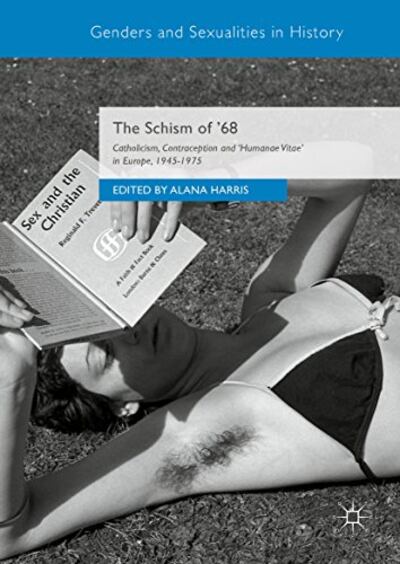A key part of a “sexual revolution” that would sweep through the western world, the anovulant pill was approved for release in the United States in 1960 and became available on the National Health Service in Britain the following year. It provided an effective non-barrier method of contraception but it also had a wide variety of other therapeutic uses. “The pill’s” prescription by doctors for a range of medical conditions effectively took it beyond the reach of the Irish laws that had since the 1930s criminalised the importation and sale of contraceptive devices. By the later 1960s Irish use of “the pill” was at a much lower level than in Britain but it was growing.
The limited data on attitudes and beliefs that exist for this time period indicate overwhelming acceptance in Ireland of the Catholic Church’s longstanding condemnation of contraception. But the Second Vatican Council had produced significant shifts in many church stances and in 1963 a Papal Commission had been set up to review the teaching on birth control. As time passed, and the endorsement of change by the majority of the Commission’s members became known through press leaks, expectations rose that a change in teaching was on the way. These expectations were confounded when the encyclical Humanae Vitae was published late in July 1968.
The prevailing atmosphere in the period preceding the encyclical was such that that the National Maternity Hospital, whose patron was Archbishop John Charles McQuaid, had begun prescribing “the pill” to some patients attending its marriage guidance clinic. This quickly ceased after Humanae Vitae appeared. But wider medical opinion and practice was not about to fall into line with reaffirmed church teaching. Even a Catholic religious organisation for doctors like the Irish Guild of St Luke, SS Cosmas and Damian was deeply divided on the issue.

Its secretary general wrote to guild members that while “we must give complete obedience to the Holy Father…we have an equal loyalty to the long-term future of the Church” and here “I do think it is our solemn duty to leave our bishops in no doubt whatsoever what the great mass of our profession think concerning the Encyclical”. In his view the Encyclical contained “significant errors” of medical fact and he suggested that, for private submission to theological scrutiny, doctors should “draw up all the difficulties that arise by the use of the safe period, recently eliminated by the use of the Pill … if the husband is an aggressive psychopath, if he is an alcoholic, can the use of the Pill be sanctioned in such cases as it was sanctioned for the use of the nuns in the Congo?”
Pondering similar issues was a September 1968 gathering at Bargy Castle in Wexford of professionals from medical as well as other backgrounds. A section of the document drawn up here for submission to the Irish bishops set out the views of the members of the medical profession present. This characterised “the biological premise upon which the encyclical’s recommendation of the rhythm method is based” as “scientifically untenable” before turning to “the harmony of married life”. Here the contraceptive methods condemned by the encyclical were stated “to have been found to foster conjugal love and help towards the attainment of maturity in marriage relationships” whereas “the tensions and fears brought about by total abstention from intercourse or by the use of the insufficiently effective rhythm method frequently led to a deterioration in the quality of life of the family as a whole, especially in cases where further pregnancy was absolutely contraindicated”.
Gathering at Kilkenny in the following month, guild members managed to agree a statement welcoming the encyclical. Loyal to the papal teaching, they would base their approach to the responsible parenthood it affirmed on the infertile period. Yet the guild also felt “constrained to point out that the failure rate for this method of family limitation is high”. Consequently it not only endorses the Holy Father’s appeal to men of science “to strive to provide a sufficiently secure basis for a regulation of birth founded on the observance of natural rhythms” but proposes that this be made the special concern of the guild “everywhere and immediately”.
Later that month the Irish hierarchy acknowledged “the delicate personal problems and intellectual difficulties” the teaching of Humanae Vitae would create for some of the faithful. The bishops anticipated “understanding and sympathy” of these on the part of priests hearing Confession and made a commitment to encourage the development of “education, counselling and other services” to enable a “more complete vision” of Christian marriage to be achieved by Irish Catholics. The partial replication then under way in Ireland of the English Catholic Marriage Advisory Council provided a vehicle for such a development.
But the Irish Catholic Marriage Advisory Council experience only illustrated the gulf the encyclical had opened up between the Church and secular professionals. In Dublin the priest directing its centre in 1971 found it difficult to identify doctors who actually believed in the efficacy of the “temperature method” – “the majority of doctors regard it as too time-consuming for them as well as being too complicated and too restrictive for the average person”. In Cork the bishop closed down the centre after clashing with its medical personnel over the dissemination of information on the demand for family planning services.
Theoretical and practical considerations combined to undermine Humanae Vitae. Its science was perceived to be unsound while the "natural" methods it advocated were at the time neither reliable nor simple to use. Use of "the Pill" continued to spread in Ireland while public attention began to focus not on the church teaching that condemned contraception but on the state law that criminalised it.
Peter Murray teaches sociology and politics at Maynooth University. He contributed the chapter on Ireland to The Schism of '68: Catholicism, Contraception and Humanae Vitae in Europe, 1945-1975 edited by Alana Harris and published by Palgrave Macmillan












